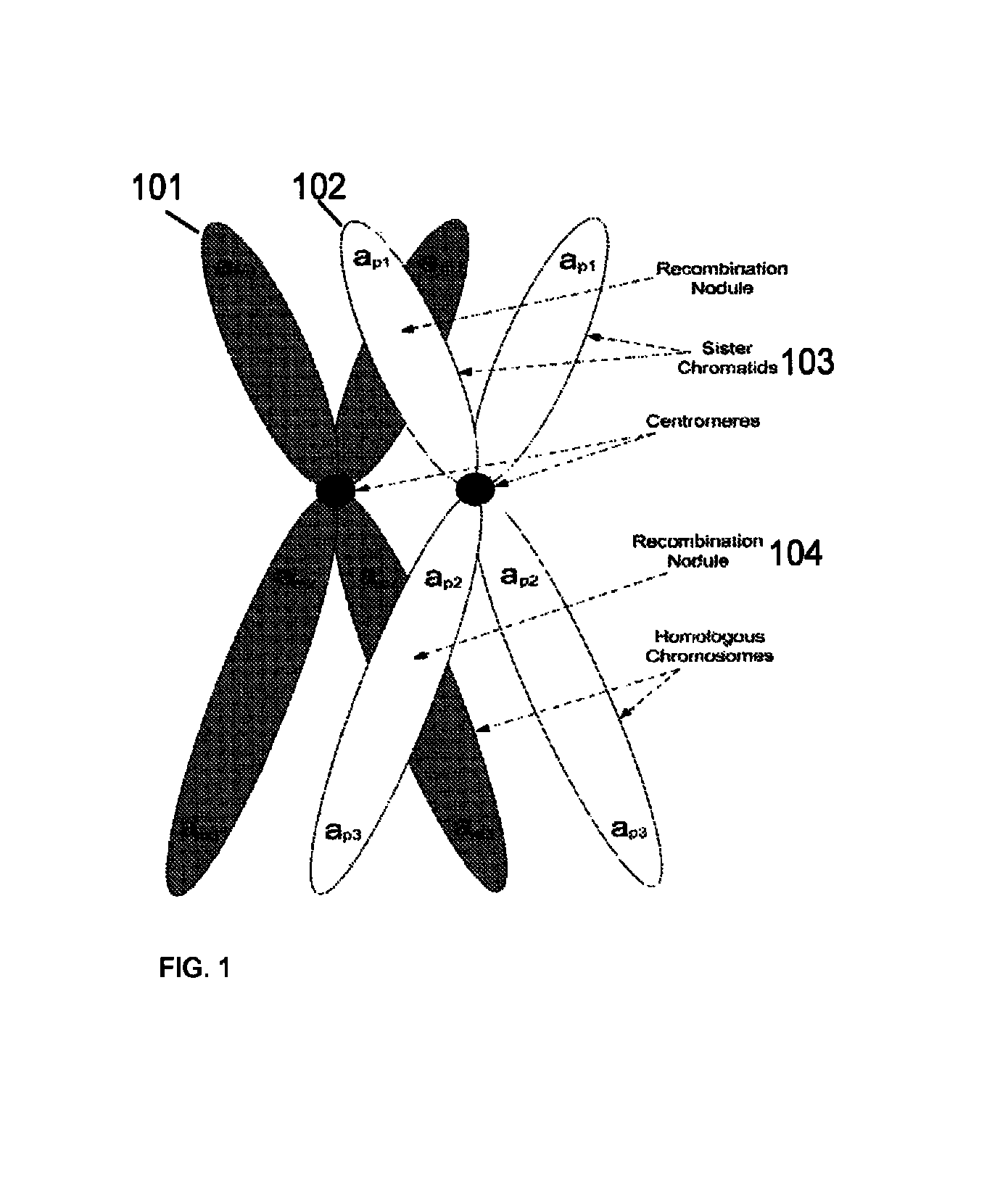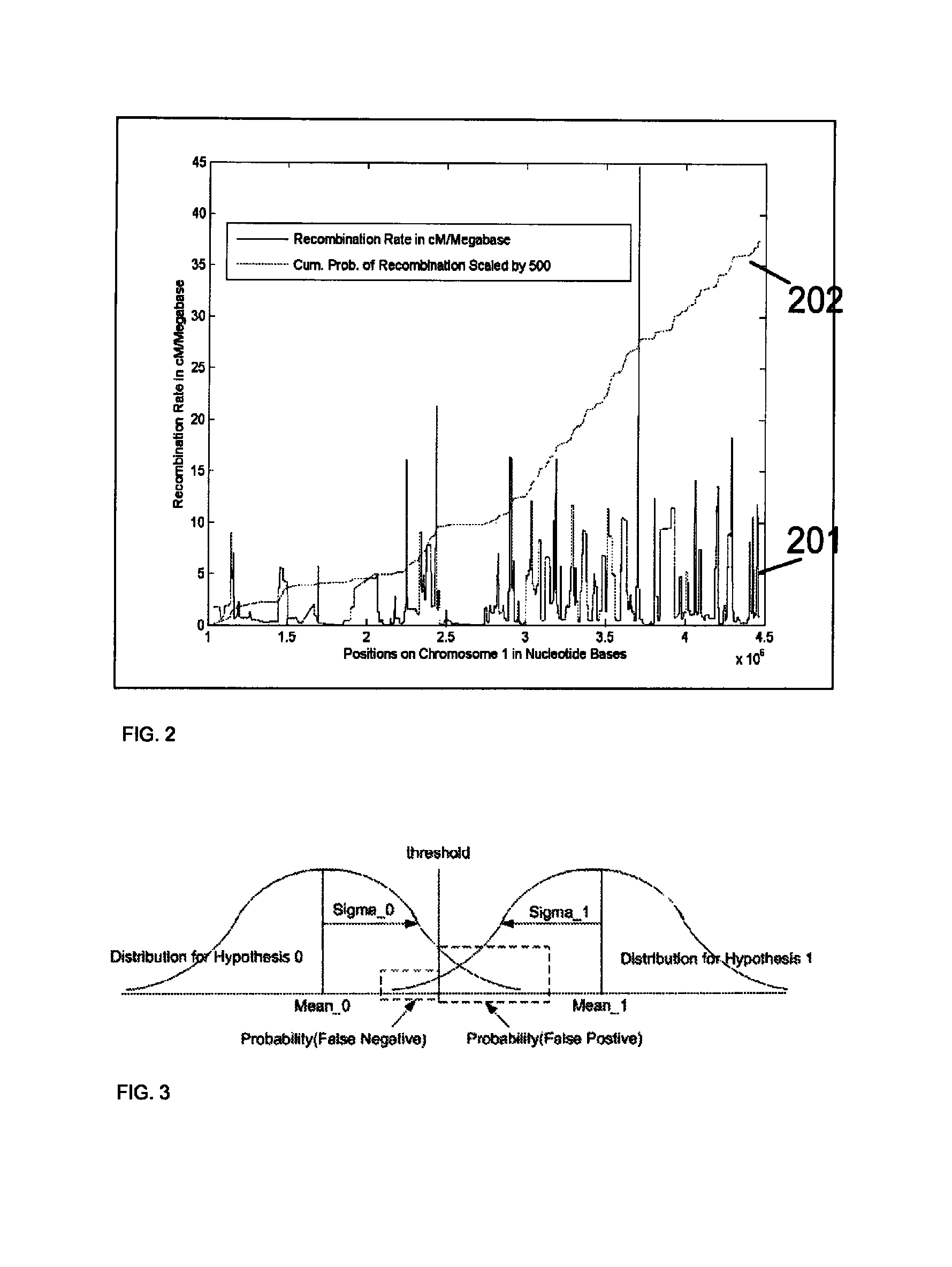Method for determining the number of copies of a chromosome in the genome of a target individual using genetic data from genetically related individuals
a technology of target individuals and chromosomes, applied in the field of acquisition, manipulation and use of genetic data, can solve the problems of a standard method that requires invasive testing, carries a roughly 1 percent risk of miscarriage, and is difficult to enrich fetal cells to purity in any quantity, and the seriousness of the potential abnormality outweighs the risks
- Summary
- Abstract
- Description
- Claims
- Application Information
AI Technical Summary
Benefits of technology
Problems solved by technology
Method used
Image
Examples
example input
[0336]Two input examples are shown. The first example is of a set of SNPs with a low tendency to cosegregate, that is, SNPs spread throughout a chromosome, and the input data is shown in FIG. 21. The second example is of a set of SNPs with a high tendency to cosegregate, that is SNPs clustered on a chromosome, and the input data is shown in FIG. 22. Both sets of data include an individual's measured SNP data, the individual's parents SNP data, and the corresponding confidence values. Note that this data is actual data measured from actual people. Each row represent measurements for one particular SNP location. The columns contain the data denoted by the column header. The key to the abbreviations in the column headers is as follows:[0337]family_id=the unique id for each person (included for clerical reasons)[0338]snp_id=the SNP identification number[0339]e1, e2=the SNP nucleotide values for the embryo[0340]p1, p2=the SNP nucleotide values for the father[0341]m1, m2=the SNP nucleotid...
PUM
| Property | Measurement | Unit |
|---|---|---|
| time | aaaaa | aaaaa |
| Multiple Displacement Amplification | aaaaa | aaaaa |
| physical | aaaaa | aaaaa |
Abstract
Description
Claims
Application Information
 Login to View More
Login to View More - R&D
- Intellectual Property
- Life Sciences
- Materials
- Tech Scout
- Unparalleled Data Quality
- Higher Quality Content
- 60% Fewer Hallucinations
Browse by: Latest US Patents, China's latest patents, Technical Efficacy Thesaurus, Application Domain, Technology Topic, Popular Technical Reports.
© 2025 PatSnap. All rights reserved.Legal|Privacy policy|Modern Slavery Act Transparency Statement|Sitemap|About US| Contact US: help@patsnap.com



